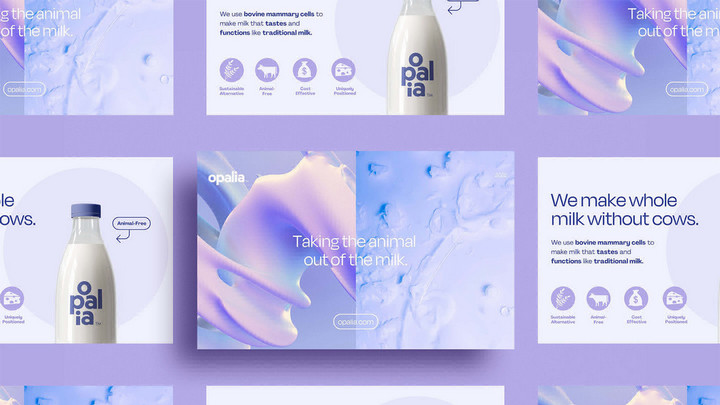Green by design
December 04, 2024

UVic grad Emma Fanning co-founded Little Fox Design in her quest to find sustainable industry practices.
Fully edible, backyard-compostable, plastic-free cutlery; alternative seafood made from fungi; and bioidentical, animal-free milk—these are just a few of the innovative, sustainable products UVic alumna Emma Fanning has highlighted through her eco-conscious brand design.
Little Fox Design, a full-service green design firm co-founded by Fanning, BA ’17, and Sastun Phillips, began when Fanning freelanced as a designer while pursuing her degree in English and Professional Writing. She attended university in the years before worldwide climate marches and student protests. Still, Fanning’s anxiety over the climate crisis propelled her to dive deep into research on sustainability.
Today, the award-winning company partners with clients who value transparency, science-backed sustainable practices and working collaboratively for a better future for people and the planet. “For Little Fox, green design means that we consider the types of clients we work with, the impact of materials we specify for our clients (prioritizing recycled paper, safer inks, and reduced consumption), and keeping our own carbon footprint as minimal as possible,” says Fanning. They’ve taken on projects for brands like Opalia, a Canadian biotech company creating bioidentical milk without the use of animals, and Aqua Cultured Foods, an alternative-protein start-up that has created an alternative-seafood made out of fungi.

The team often works with brands as they go into their first major round of funding, tackling branding strategy and brand development. This includes design of colour palettes and typography and developing assets like websites, pitch decks and marketing materials.
Throughout this process, Little Fox’s recommendations are based in research into forestry and paper-production practices, material lifecycles and consideration of monoculture production and overseas deforestation practices. This leads their design choices away from materials like compostable plastics, which require industrial composting facilities to break down, or bioplastics, which are created from monoculture crops that can contribute to deforestation. The result is a holistic view of sustainability on a global scale, equipping brands to continue centring sustainability even after they finish their work with Little Fox.
Beyond educating clients on sustainable design choices, Little Fox offers resources to other designers looking to make ethical choices on sustainability through a Substack newsletter and an online “Green Graphic Design” course.
“I would feel it’s unethical for me to be a sustainable designer but lock a lot of the research and learning I’ve done behind extremely expensive paywalls,” says Fanning.
Her educational materials are regularly updated. Lately, the growth of generative AI has been a specific point of concern, both for its negative environmental impacts and its training on the work of other artists and designers without their consent.
“I wanted other designers to be able to find well-sourced information and frameworks in one easy place. The primary goals of the course were to provide a comprehensive, accessible guide to being a sustainable graphic designer,” Fanning says. “We think that sharing this information is crucial in order to pave the way towards a better future—one where green design is just ‘design’ because these considerations are innate and not a specialty niche of certain designers.”
—Katy DeCoste, MA ’22
This article appears in the UVic Torch alumni magazine.
For more Torch stories, go to the UVic Torch alumni magazine page.
